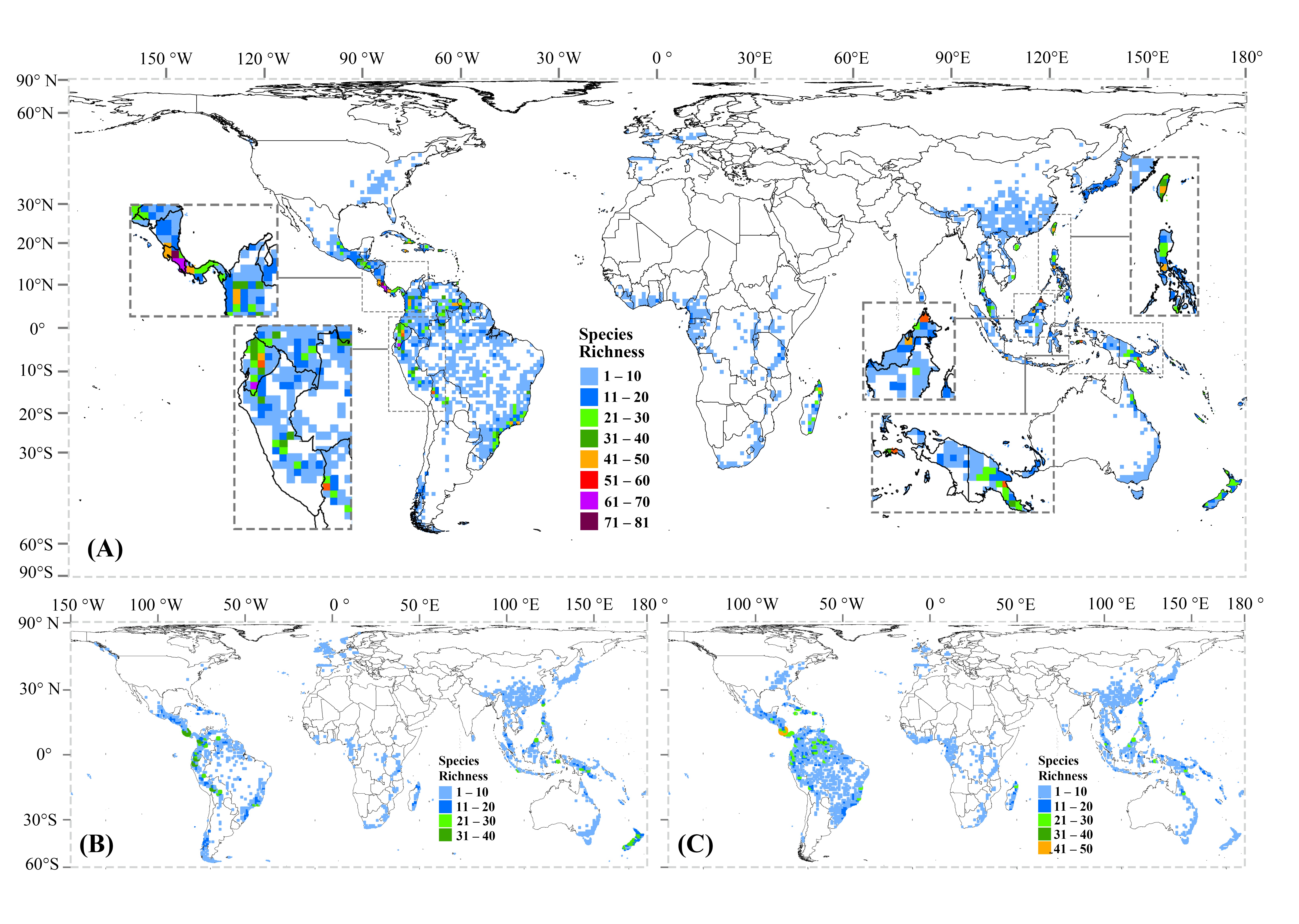TOPOGRAPHY, CLIMATE AND FOREST COVER DETERMINETHE GLOBAL SPECIES RICHNESS PATTERNS OF FILMY FERNS(HYMENOPHYLLACEAE)
DOI:
https://doi.org/10.24823/ejb.2025.2042Keywords:
Climate adaption, Filmy ferns, Global diversity, Species richness, Topographical variationAbstract
Species richness patterns are essential for understanding how species diversity has evolved. The filmy ferns (Hymenophyllaceae) are one of the largest families of epiphytic ferns; however, a comprehensive global overview of their species diversity and distribution is lacking. In the present study, we identified the regions of greatest species diversity as Central America, South America and Southeast Asia (including Taiwan Island), followed by the Brazilian Atlantic Forest and Madagascar. North America and Europe are low in species richness. Global species richness data based on 100 × 100 km grid cells were analysed to investigate the correlation between species richness and ecological factors. Our results show that filmy ferns have a strong preference for moist and warm habitats, and that current species richness patterns are codetermined by topography, climate and forest cover. Our results also indicate that, as expected, the relationship between soil and epiphytic ferns is minimal, and that there is weak support for the use of solar radiation levels to predict global patterns of diversity for filmy ferns, which primarily occur in deep shade. We highlight potential ecological differences between the two lineages of the Hymenophyllaceae: hymenophylloids and trichomanoids. The unusually low species diversity of filmy ferns in some areas (e.g. the Pan-Himalayan region) is potentially explained by historical ecological adaptation and lack of suitable habitats.

Downloads
Additional Files
Published
Issue
Section
License
Copyright (c) 2025 T. X. Ye, F. Wu, X. C. Zhang

This work is licensed under a Creative Commons Attribution 4.0 International License.
Please read our Open Access, Copyright and Permissions policies for more information.

